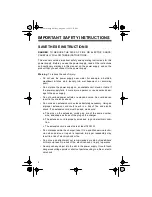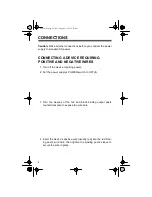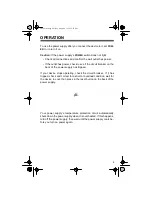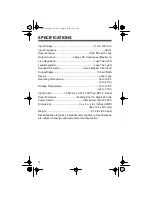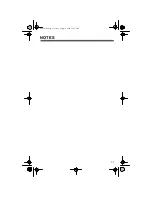
5
Caution: To reduce the risk of damage:
• Do not expose the power supply to rain or excessive moisture.
• Do not operate the power supply if it has been dropped or damaged in
any way. Take it to a qualified service technician for repair.
• Slots and openings on the back and bottom of the power supply’s cab-
inet are for ventilation. To ensure the power supply’s reliable operation
and to protect it from overheating, be sure these openings are not
blocked or covered.
• The power supply should be operated only from a standard AC outlet
that provides 120V AC/60 Hz, as indicated on the label. If you are not
sure of the type of power supplied to your home, consult your local
power company.
• For added safety, the power supply’s polarized plug fits only into a
polarized outlet. If your AC outlet is not designed for the polarized
plug, have an electrician install the correct outlet, or use an adapter to
ground the power supply safely. Do not defeat the safety purpose of
the plug.
• To protect the power supply during a lightning storm or when it is left
unattended and unused for long periods of time, unplug it from the AC
outlet. This will prevent damage to the power supply from lightning
and power surges.
• Do not operate the power supply with a damaged cord or plug —
replace them immediately. To reduce the risk of damage to the electric
plug and cord:
a. Make sure the cord is not located where it will be stepped on,
tripped over, or otherwise subjected to damage or stress.
b. Disconnect the power supply by pulling the cord’s plug rather than
the cord.
• Unplug the power supply from the outlet before attempting any main-
tenance or cleaning. Do not use liquid or aerosol cleaners. Use a
damp cloth for cleaning and then wipe it dry immediately.
• If your power supply does not operate normally, in particular if any
unusual sounds or smells come from it, immediately unplug it and
contact your local RadioShack store.
22-504.fm Page 5 Friday, August 6, 1999 12:52 PM




